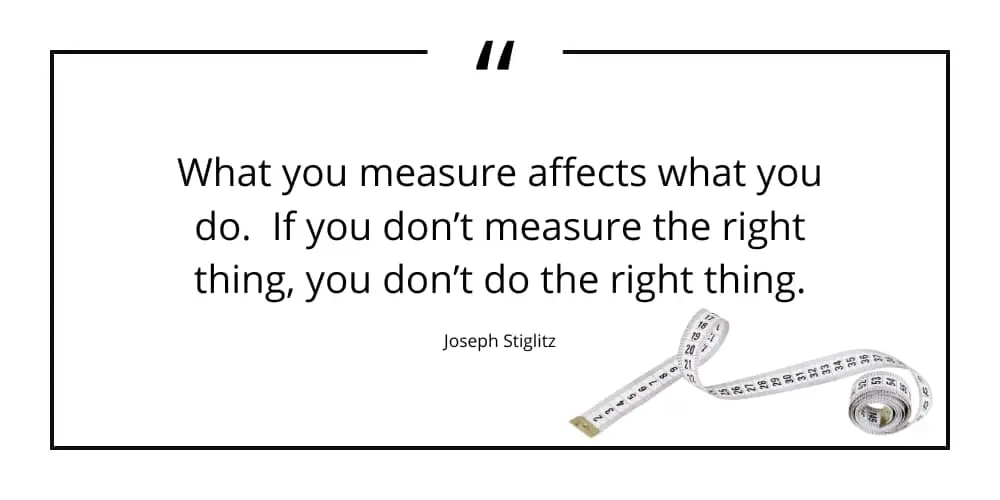In today’s edition, we explore why the KPIs you track can make or break your sales growth. I’ll share how my fitness tracker changed the way I think about KPIs, and break down the exact sales metrics that help you scale without getting lost in vanity numbers. Let’s get focused on what really matters.
This week’s suggested resource: Hit Your Target Metrics
I’ve been using a WHOOP fitness tracker for a while now. The key data I track is:
- how much sleep I’m getting,
- the strain from how hard I worked all day,
- how my body feels during and after recovery, and
- vital signs and what they tell me about my health.
And here’s the funny thing about these devices. They really do help you track your health a lot more closely. They help you see the truth and the damage you might be causing your body…
After some time in, you begin growing more conscious of your health.
- You start parking a little further from the shop to get extra steps.
- You choose the stairs instead of the lift.
- You become a little stricter with your bedtime.
It goes on…
Now, the tracker itself didn’t make me fitter, but it did make me focus on what mattered. And that’s the lesson.
What you measure changes what you do.
It’s the same in sales. When you track the right KPIs, you build momentum.
When you track the wrong ones, you create noise.
Most businesses track what’s easy, like total revenue or number of deals closed, but those are lagging indicators. They tell you what’s already happened. If you want to scale, you need to track the leading indicators: the activities and behaviours that build your pipeline and drive future growth.
Let’s break down the 5 KPIs that actually help you scale…. and what to avoid.

1. Activity volume (tracked daily)
What to track:
- Calls made
- Emails sent
- LinkedIn messages sent
- New contacts added
Why it matters: Revenue starts with activity. If you’re not moving, you’re not growing. Focus on the controllable. You can’t control when someone buys, but you can control how many people you speak to today.
2. Meetings booked (tracked weekly)
What to track:
- Number of meetings set per week
Why it matters: This is the key conversion point. All the activity in the world doesn’t matter if it doesn’t generate conversations. If meetings aren’t being booked, either your messaging is off or your activity isn’t hitting the right volume.
3. Show-up rate (tracked monthly)
What to track:
- Percentage of booked meetings that actually happen
Why it matters: If your show-up rate is low, you’ve got a qualification or positioning problem. Improving this boosts efficiency and gives you better data to forecast growth.
4. Pipeline coverage ratio (tracked monthly)
What to track:
- Value of your pipeline compared to your target (e.g. 3x or 4x coverage)
Why it matters: Your pipeline coverage tells you if you’re building enough opportunities to hit your goals. If you’re aiming for £100,000 this quarter, do you have £300,000–£400,000 in your pipeline to give yourself a realistic chance? This keeps your sales process healthy and scalable.
5. Follow-up cadence (tracked monthly)
What to track:
- How consistently you follow up on leads
- Number of touches per prospect
Why it matters: Most deals are won after multiple touchpoints. If you’re not following up properly, you’re leaving deals on the table. Track this, and your close rates will improve.
What to Stop Tracking (or Stop Obsessing Over)
- Revenue this week: You can’t control this directly. Focus on the actions that create revenue.
- Proposal sent count: Proposals without qualification or follow-up don’t mean anything.
- Social media likes: If they don’t lead to conversations, they’re just vanity metrics.
Tracking leading indicators gives you control over your sales process. The daily and weekly activity compounds into monthly and quarterly growth. And KPIs create focus on the right metrics to track, which creates results.
So here’s the takeaway: Don’t track what’s easy. Track what matters. Just like my fitness tracker nudged me to a healthier life, the right KPIs nudge your sales team to act in the right direction.
Focus on the controllables. Measure the drivers, not just the outcomes.
That’s how you scale.
Here’s to tracking the right way







